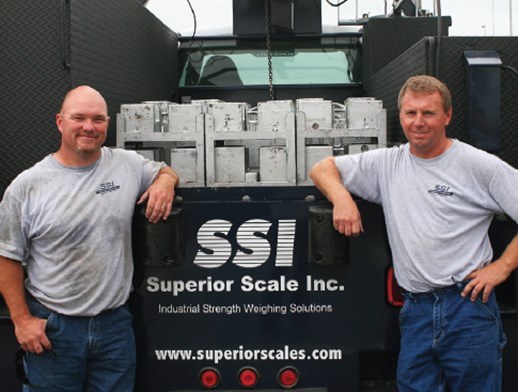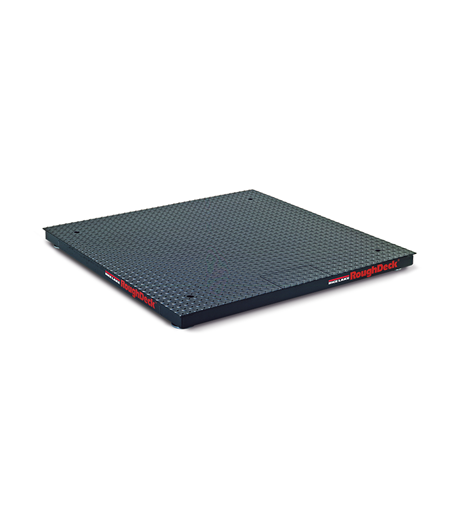Is the website displaying in the correct language? Please confirm or select a different language.
Your region has been set automatically. Please confirm or select a different region.
Rice Lake Rules at zMax Dragway
A change from 59 to 93 degrees in two and a half hours is drastic. A change from 0 to 100 mph in 0.8 seconds is a face-contorting, ear-flattening, physics-challenging rocket ride to make even an F-16 fighter jet envious. To quote Charles Darwin, "It is not the strongest of the species that survives but the one most responsive to change." If this is true, the grand opening of zMax Dragway in Concord, N.C., featuring 7,000+ horsepower top fuel dragsters (the fastest-accelerating machines on the planet) may have been a glimpse into the future of earth's gene pool.
When Hannah Martell, graphic designer, and I left Wisconsin the morning of September 8, it was 59 degrees. When we landed in Charlotte two and a half hours later, I could have sworn we landed on the equator: 93 degrees with heavy humidity. I questioned whether my Wisconsin body, typically fueled by cheese and bratwurst, could survive in this environment. I felt like a deep-sea creature, yanked from the cool depths to this sweltering surface.
We were in town to cover the collection of top fuel, funny cars, pro stock motorcycles and pro stock cars that had descended on Concord, N.C., September 10-14 for the zMax Dragway inaugural National Hot Rod Association (NHRA) Nationals. Deemed the "Bellagio of Dragstrips," zMax is an $80M, state-of-the-art facility featuring the only all-concrete, four-lane drag strip in the country. Typically, a drag strip will have concrete for the first 660 feet and then transition to asphalt. When traveling at incredibly high speeds, any transition can become a very bad thing. When the racer's wheels hit asphalt after running on concrete, their traction can be compromised. The perfectly level 1,320 feet of concrete at zMax eliminates this transition and should be a breeding ground for broken records.
Bruton Smith, owner of Speedway Motorsports, Inc., is notorious for making big splashes. The billionaire owns the place down the street from zMax, Lowe's Motor Speedway (in addition to seven other NASCAR tracks). He settles for nothing but the best, no exceptions. When building zMax, every detail was covered. A typical dragway has two lanes; zMax has four. Behind the starting line stands a 34,000 square foot tower that includes 16 luxury suites. Clearly, the finest quality was a priority, and when it came to selecting a scale, Rice Lake was there.

The design of a drag car involves incredible technology and engineering. Each team's crew has a mission: to reduce weight as much as possible without dipping below the minimum requirement and to maintain safety. We were able to observe John Force's crew (Force is a 14-time funny car champion and one of the most dominant drag racers in the sport with 126 career victories) assemble his incredible ride for the weekend. Carbon fiber and Kevlar abound in the car's construction. Money, clearly, is no object in building these machines; but what does count is every ounce, and weight monitoring is essential.
In the sport's early days, sneaky drivers would sometimes work around the rules—adding weight to themselves or within hidden compartments during the weighing stages, then shedding this weight during the race to gain an unfair advantage. These days, weighments are taken directly after the race. At zMax, two special Rice Lake RoughDeck® scales are installed—one on each side of the drag strip. Actually, each scale is divided into two 8 ft x 14 ft RoughDecks, joined to act as one scale (10,000 lb x 5 lb). This allows the necessary length to accommodate the top fuel drag cars while still providing 5 lb accuracy.
Once a race is finished, each car pulls onto one of the Rice Lake scales to ensure they are not below the minimum requirements. Even a 5 lb violation results in disqualification, no questions asked. The results are displayed on a 720iTM indicator connected to a tape printer. The 720i's LCD screen makes it a perfect selection because it remains readable, even in direct sunlight.
Steve Daniels, president of Superior Scale, Inc., installed and calibrated the scale. "They wanted the best, so Rice Lake was an easy sell," Steve said. "Their quality is head and shoulders above the competition."

Steve has the unique talent of being able to do his own professional concrete work during scale installations. He does not, however, drive the concrete mixer. "They backed up a fully loaded, 20,000 lb concrete truck onto the scale," Steve remembers. With a 10,000 lb capacity, surely the load cells would be ruined, if not more damage done. "The scale feet were the only part of the scale damaged. That's amazing!" Steve said, showing me a warped foot. "This is one tough scale."
Without hesitation, I approached the vehicle at near top fuel acceleration and opened the driver's side door. Immediately, confusion set in. The cockpit looked more like a space shuttle than my 1997 Mercury® Sable® back home. I was able to recognize the steering wheel, but that was the extent of similarity. Levers, buttons and gauges seemed to cover every square inch. To compound my bewilderment, I wasn't certain exactly how to enter the vehicle. Protective bars inhibited a customary turn-and-sit approach, and I didn't want to roll down the window and enter Dukes of Hazzard style. To be honest, I did want to, but didn't think the maneuver would go over very well.
With the feet replaced and the scale calibrated, SSI quickly had the scale ready to go. Our first customer, Robert Burgin, driving a 2007 Chevy® Cobalt® Super Stock rated at 648 horsepower, pulled onto the scale for a test reading. The weight registered within seconds and Burgin, who knows the weight of his car like most people know their own phone number, verified its accuracy. "That's the first time I've seen an accurate weighment right off the bat!" Burgin said. He exited the race car so Hannah could take a few photos. Noticing my admiration, Burgin turned to me and said, "You can get in if you'd like."
In an impressive display of body contortion worthy of a Pilates® instructor, I managed to park myself in the driver's seat. The buttons and levers seemed to cry out, "Push me! Pull me! What's the worst that could happen?" Indeed. However, better judgment reigned supreme, and I simply marveled at the complexity of this machine, proud of my remarkable self-restraint. I could only imagine what it is like to drive such a vehicle. "When I hit the gas, I can only see lights," Burgin said, describing the near 45-degree ascent of the car's front end at launch. "It could flip over without those wheels in the back." He pointed to a pair of small wheels attached to rods extending from the bottom of the Cobalt's bumper. "When it touches back down, I just try to keep it as straight as possible."
The following day was the track's grand opening. The scale calibration and Robert Burgin's initial weighing were performed as day-before preparation. Ron Hawkins, an NHRA official, was now manning the RoughDeck and 720i, taking weighments as each eardrum-threatening race concluded. "This is real readable," Ron said of the 720i. "Sometimes we have to cut a hole in a cardboard box and put it over the screen to read the numbers," he said of other indicators. "On this one, when a car leaves, it drops right back down to zero and stays there. Some drift around, so that's really good!" With the drag strip and RoughDecks now in constant use, the custom scales perform flawlessly, car after car.
When Bruton Smith decided to build the finest drag strip in the country, I'm sure he paid more attention to the luxury boxes than the scale; regardless, he got the finest of both. After the races finished, Danny Garcia, NHRA’s national technical director, complimented Superior Scales' installation and Rice Lake's equipment, stating that it’s the best system on the national tour.
When we left, the temperature back home had risen to 68 degrees, while local temperature lowered to 73. Could it be possible the environment acclimated itself to me? Years of watching Star Wars movies have taught me there could be only one explanation: clearly, the Force must be strong with this one.
If, as Darwin stated, the species most responsive to change will lead the path to the future, surely those individuals who can dictate such change are worthy as well! Armed with a warped and irrational sense of power, and hope for potential inclusion in the future's gene pool, I said goodbye to North Carolina and we boarded a plane for Grantville, PA.
Subscribe to Rice Lake Magazine
Sign in or create a Rice Lake website account to request a Rice Lake Magazine filled with application stories like this one be sent to you.
Account Sign In Create an Account


 My Account
My Account


